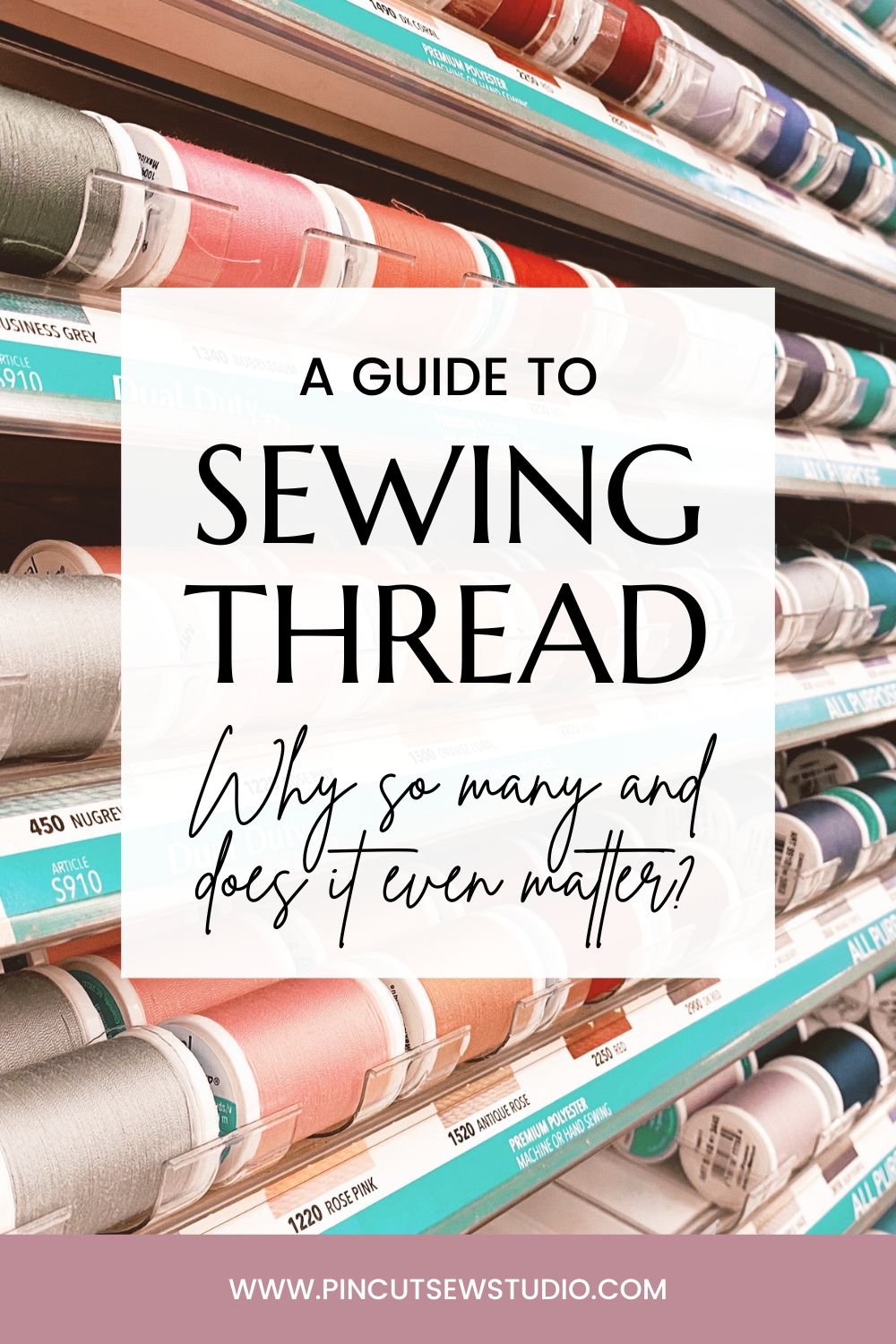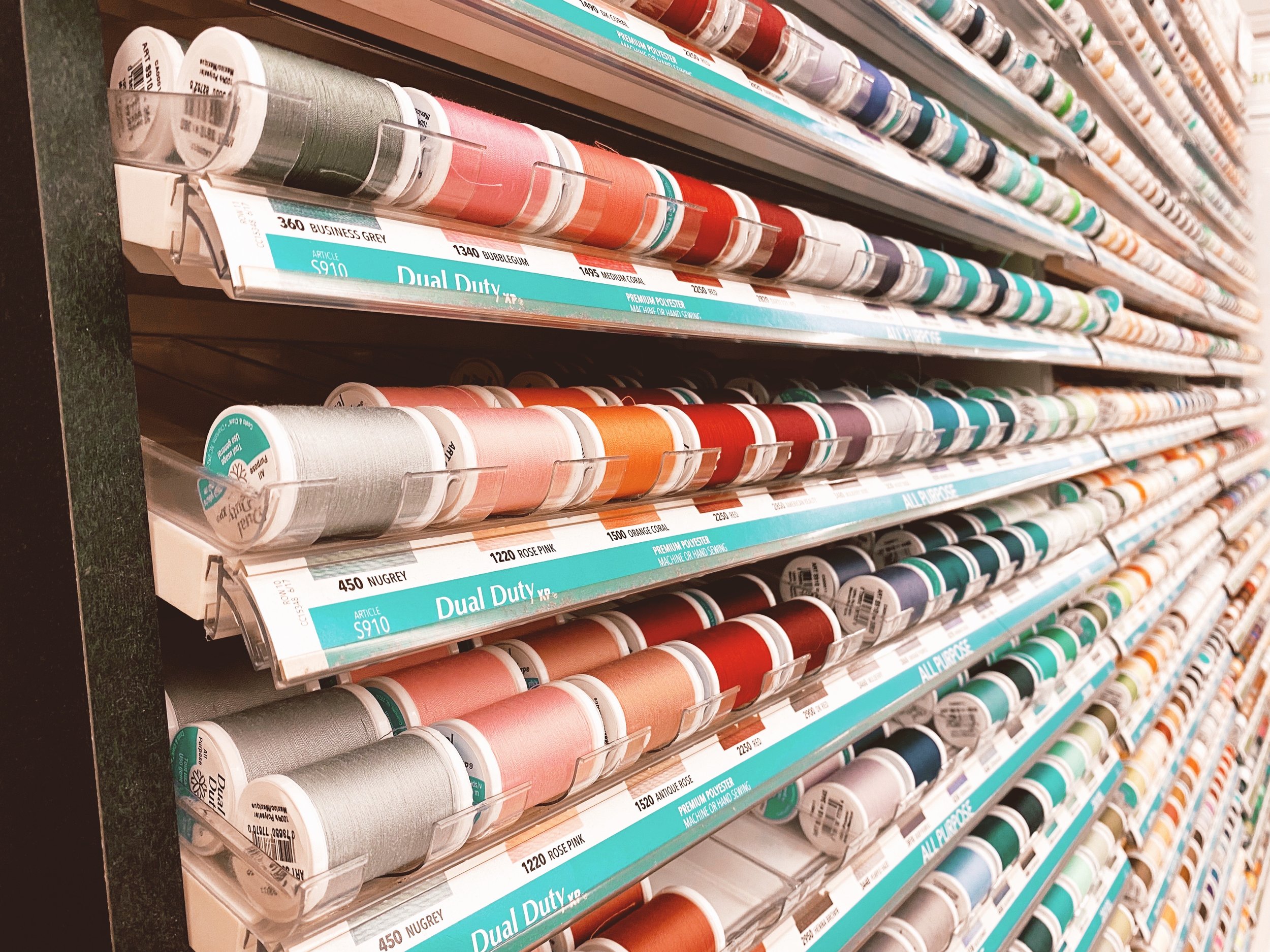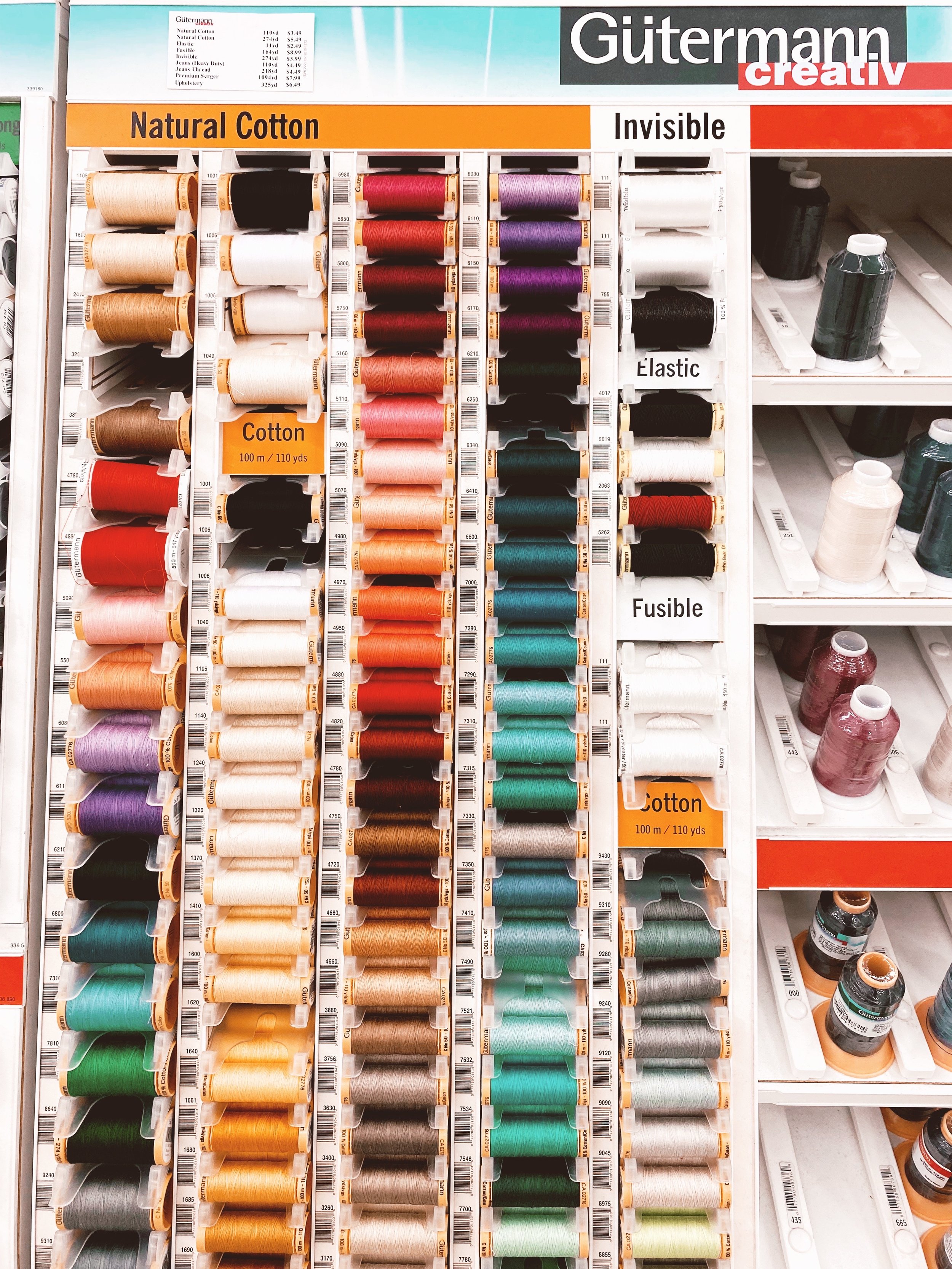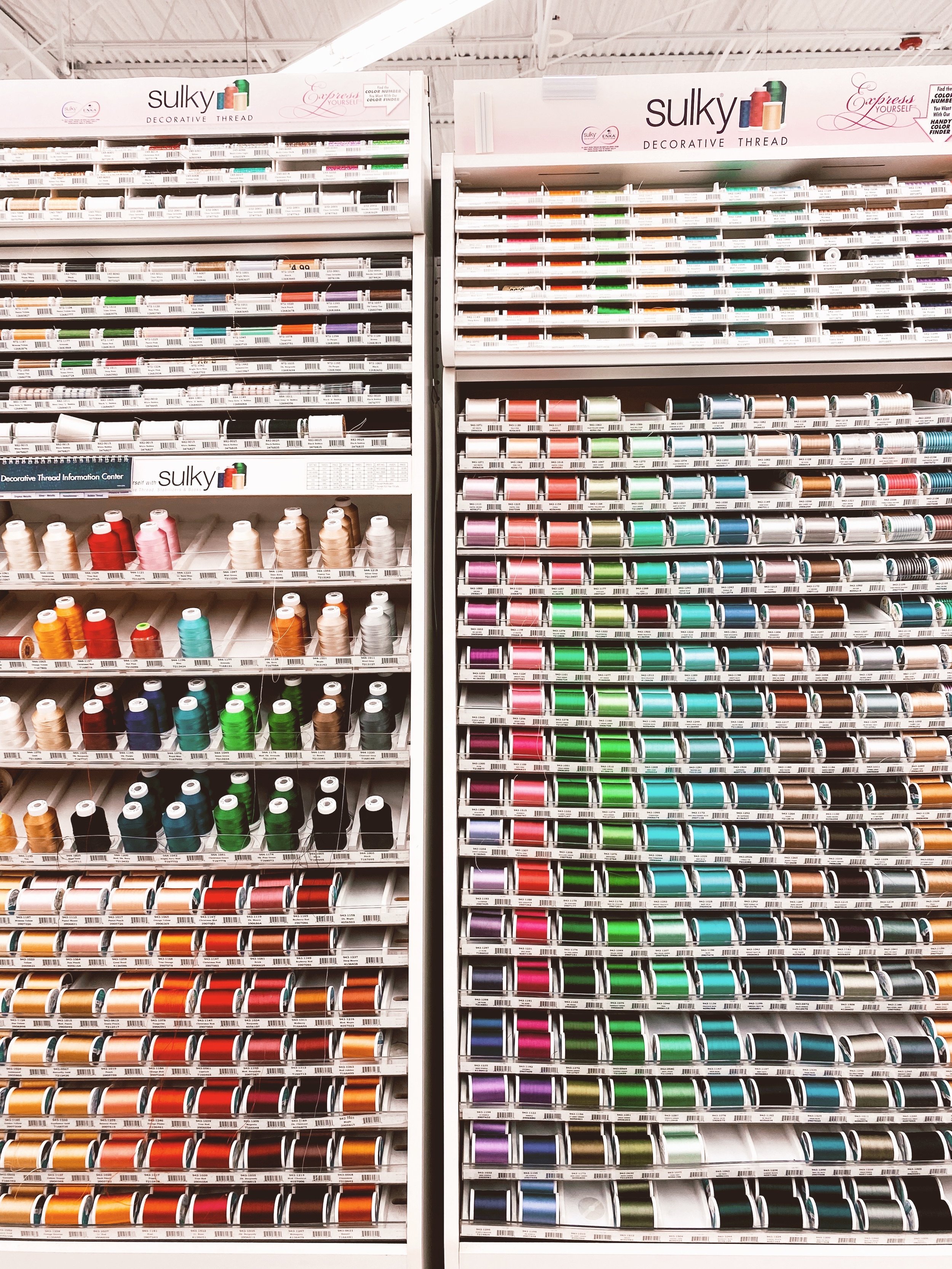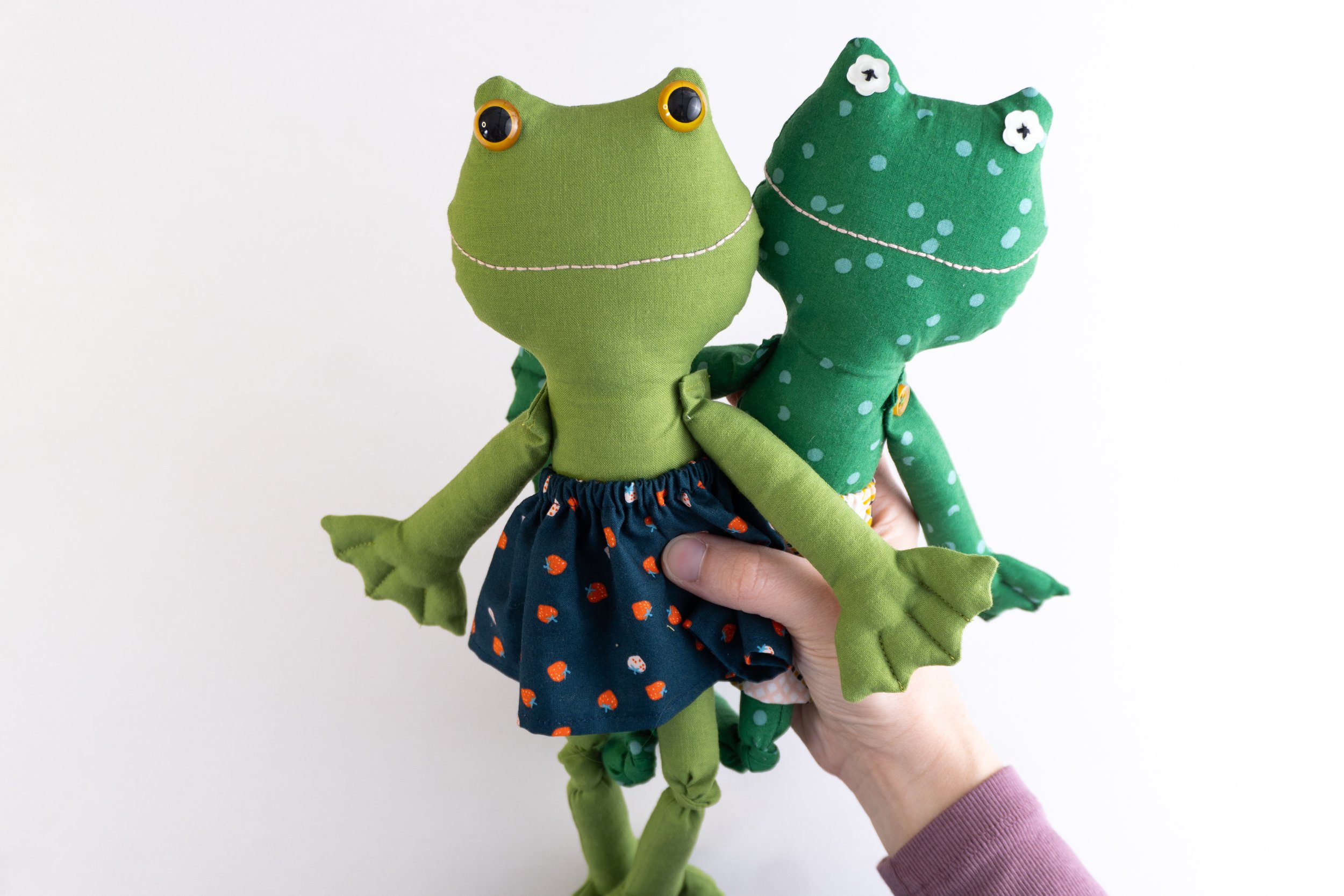Sewing Thread! What's the Difference and Does it Matter?
Most of the time, when I go to the fabric store for thread, I know exactly where to go and which thread type and color I’m looking for, and I don’t even notice the other four racks of sewing thread choices.
Recently, though, I needed something specific and once I found it, I realized how many specialty threads there are! You can buy special thread for so many different things nowadays and I wanted to come here and break down the reasons you might need specialty sewing thread (and when you probably don’t), plus some dos and don’ts for choosing the right thread for your project.
This post may contain affiliate links, which means that while I am not paid to promote certain items, I will earn a small commission should you purchase items through these links. For more info, see my disclosure policy.
A Guide to Choosing Sewing Thread
In case you popped in here for a very quick answer on which sewing thread to choose, or the best thread to use for sewing in general, here’s your answer:
All-Purpose Thread is generally well suited to almost every sewing project.
All-purpose is the kind that comes in all those beautiful colors and can be used for everything from clothes to crafts to quilting (but more on quilting in a minute). So when in doubt, stick will all-purpose! In the Coats & Clark brand at most fabric stores, it’s called Dual Duty. Anything from those racks will work just fine.
That said, and since thread choice can absolutely affect how your sewing machine functions, here are some rules of thumb for making sure you have success with your all-purpose sewing thread:
DON’T use vintage thread. I know it looks cool on those old wooden spools, and it’s special because your grandma owned it, but trust me, old thread can ruin your project. It’s old, brittle, and will break, either while you’re sewing, or later on when your lovely project is finished. So when it comes to vintage thread spools, display them, don’t use them.
DON’T cheap out. Those thread packs on Amazon may come with lots of colors, but they’re cheap in price because they’re cheap in quality. If you need to get started with several colors, get an assorted package of good thread instead.
DO buy the best thread you can. Gutermann is a trusted brand for many sewists, but it’s on the pricier side of the aisle, so I use Coats & Clark. I can get it locally and my machine doesn’t have any issues with it. I love the sales JoAnn almost always runs on thread, and I make sure I snap a photo of my thread drawer before I go so I can see what colors I’m low on if they’re running a sale. Hobby Lobby thread works well also with my new machine, but my old machine had trouble with it since it’s a little fuzzier than other brands. But if that’s all you have, try it and see how it works for you!
DO experiment with thread brands for your sewing machine. Part of machine trouble shooting if you’re having issues (after changing your needle!) is trying a different thread. If your machine is struggling with one brand, try another one, like Gutermann.
DO experiment with different threads for the fabric you’re using. Many machines sew knit fabrics just fine with all purpose thread, for example, but it can be fun to try woolly nylon thread to hem knits if you want to play with some professional hemming techniques.
DON’T use serger thread in your regular sewing machine. Serger thread is made differently, it’s purposely fuzzier, and will not work effectively in your machine. I include this tip because I’ve seen this question asked by people who like the idea of those giant spools for a big project like a quilt.
When Should You Use Specialty Sewing Threads?
There are a several ways you can use special threads if you want to. A lot of times, the all-purpose thread will work just fine, but you might want to try the fancy threads to get a more professional or fun result.
Shirring, for example, is done with elastic thread wound onto a bobbin. Jeans top stitching thread is nice if you want that professional jeans look. For upholstery projects like the Flower Power pillow, I bought upholstery thread. Heavy duty thread in white is something I find handy to keep on hand. It’s what I used to string my pumpkin garland together and I’ve found it’s just a useful item to make sure I have in my sewing room.
Fancy variegated threads, gold thread, and others like this are fun to use! Sulky is a brand that sells a lot of these decorative threads in so many colors. Gold thread is one of the few special threads I keep around. I’m always glad I have it, especially for Christmas projects like these gift tags, or the star on my Nativity play set. It’s not something I would gone out to buy before making those things, but I was so glad I had it in my drawer!
Thread for Quilting
There are a few schools of thought when it comes to which thread to use for quilting. Technically, 100% cotton thread is best for quilting because it won’t wear down the fibers of your pieced fabrics over time like the allpurpose will, being polyester. So if you want your quilts to last for generations like the quilts of yore, get that special thread marked for quilting. I have done a few quilts in cotton thread, but most of my quilt projects have been with all purpose thread and I decided that while I’d love them to last until my grandchildren are around, it doesn’t really matter to me if they last for generations to come.
For hand quilting, however, I do purchase the special hand quilting thread because it’s coated in a way that makes it glide more easily through the layers of fabric. I keep that around in both white and pink (for some reason, pink seems to match so many of my projects, haha!)
Be adventureous!
There are so many more thread types than I can cover here, so I encourage you to go browse in the thread section at your sewing store and make note of thread types you didn’t know existed so you can keep them in mind when just the right project comes along! Most threads are labeled with exactly what they’re intended for, which it quite handy.
To sum up the threads I make sure I have on hand, here’s what is in my thread drawer at all times:
All-Purpose Coats & Clark threads in tons of colors.
Denim top stitching thread (in that bronze color that comes on jeans.)
Heavy Duty thread in white and denim.
Extra strong upholstery thread in white.
Gold metalic thread (when I use this, I keep normal all-purpose thread in the bobbin.
Elastic thread to wind onto a bobbin for shirring.
Hand quilting thread in white and pink.
Woolly nylon in black to wind onto a bobbin when sewing ballet leotards.
Monofiliment thread in clear. This is for certain applique or upholstery projects when you want the thread to disappear.
I hope this has been helpful to some of you! Mostly I want to tell you not to stress about thread — all-purpose is probably fine ;)
Cheers!
Nikki

